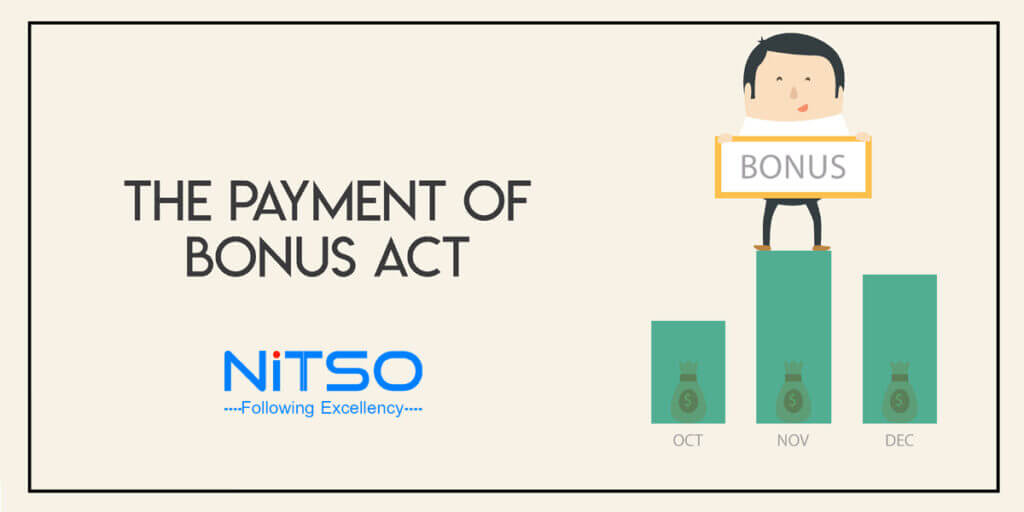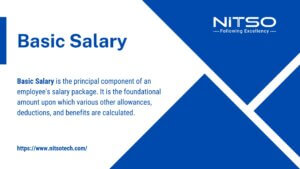The statutory bonus in India is paid according to the bonus payment law (1965). The bonus is a deferred benefit, and some companies choose to pay it in advance.
Eligibility for the bonus has been increased to include employees’ income up to INR 21,000 per month (up from INR 10,000 per month before).
Increase of the premium ceiling: previously, for the calculation of the statutory bonus, a salary ceiling of INR 3,500 per month was applied (so that the salary of an eligible employee exceeded INR 3,500 per month for calculation purposes). Of the statutory bonus, bonus was calculated using a salary of INR 3,500 per month). This ceiling was increased to INR 7000 per month or the minimum wage for employees under the Minimum Wage Act 1948, whichever is greater.
Basically, a statutory bonus is an amount given to an employee for good performance. Moreover, this can be paid to an employee during a certain time period. This is important as it helps an employee to get a better job offer. Also, it allows an employee to receive a higher salary.
Content On This Page
What is statutory bonus meaning in salary?
‘Statutory Bonus’ is the term used to refer to a bonus that is required to be paid by an employer to an employee. It is a form of incentive which is calculated using the employee’s basic salary plus a dearness allowance. The amount is then multiplied by the number of days worked by the employee during an accounting year.
Statutory bonuses are awarded to employees who are eligible under the Payment of Bonus Act, 1965. However, there are some exceptions to the law. Those who are convicted for sabotage, dishonesty, or violent behavior are not liable to receive a statutory bonus.
A statutory bonus is computed based on the total earnings of an employer in a particular financial year. This figure can be anywhere from 8.33% to 20%. The amount is also dependent on the number of profits that the employer has made in that financial year.
The minimum amount of statutory bonus is 8.33% of an employee’s basic salary. In order to be deemed eligible, the employee must have drawn a gross monthly salary of no less than Rs. 21,000 and have been working in the company for at least 30 days during the accounting year.
What is an advance statutory bonus in salary?
Usually, employers use bonuses as an incentive to boost employee morale and performance. These bonuses can be in the form of a deferred salary or an attendance bonus. Depending on the type of bonus, it can be paid outright or in advance.
The Payment of Bonus Act, 1965, defines the statutory bonus. It specifies the minimum quantum of a statutory bonus and the computations that go into its calculation. The statutory bonus can be in the form of a percentage of an employee’s basic salary, dearness allowance, or B. The statutory bonus can be in the range of 8.33% to 20% of the basic salary. The bonus is calculated using two formulas.
The simplest and most straightforward way to calculate a statutory bonus is to multiply the employee’s basic salary by the amount of dearness allowance he or she receives. The resulting bonus is then calculated using the applicable state’s minimum wage.
This is a simple process, and the payout is quite impressive. The bonus is not paid to employees who earn more than INR 21,000 a month. It is only given to employees who are earning less than that.
Another clever way to calculate a statutory bonus is by measuring the number of working days in a year. An employee is eligible for the statutory bonus if he or she works 30 days or more in an organization during an accounting year.
Who is eligible for a statutory bonus?
Several industries in India are required to pay a statutory bonus to their employees. This is a type of deferred benefit that is paid as per the Payment of Bonus Act, 1965. In order to receive the bonus, the employee must have been employed in an organization for at least 30 days during an accounting year.
The amount of bonus is calculated based on the wages of the employee and is subject to the provisions of the Act. The rate is between 8.33% and 20% of the employee’s salary. The employer must consider the minimum wage as part of the calculation of the bonus.
In the past, the maximum wage ceiling for calculating the statutory bonus was INR 3500 per month. However, the Central Government has increased the limit to INR 21,000 per month. This amendment has come in response to the demands of 10 central trade unions.
The minimum wage ceiling under the Minimum Wages Act, of 1948, is INR 7000 per month. This is the same salary ceiling that is applicable to bonus payments under the Bonus Act. In addition, the basic salary and dearness allowance must not exceed INR 21,000 per month.
The statutory bonus is a method of sharing profits with the employees of the company. Some organizations choose to pay the bonus in advance.
Statutory Bonus calculation
Several companies in India choose to pay their employees a statutory bonus. This is a form of payment, generally, in the form of cash, that is tied to performance.
The statutory bonus calculation in India is based on two formulae. One is for the number of days that an employee has worked for an organization during an accounting year. Another is for the minimum amount of money that the employee can earn as a bonus.
The minimum statutory bonus is calculated as 8.33% of the basic salary. The maximum bonus is 20%. It is important to note that the act does not require an employer to pay a higher bonus.
The act is designed to reward employees and motivate them. It is also linked to productivity. The government can exempt an employee from receiving a statutory bonus if he is paid less than the minimum wage.
The act states that all bonuses should be paid in cash. It is important to note that bonuses cannot be disguised as perquisites or allowances.
The minimum statutory bonus is 60 rupees for an employee who has not completed 15 years. The statutory bonus calculator in India is a free tool to help you estimate your bonuses. The calculator uses the employee’s basic salary, employee’s dearness allowance and the minimum wage in your state to give you a good idea of how much you can expect to receive.
What is the time limit for payment of the bonus?
During the course of his business, Raj Singh was confused by the amount of bonus he was entitled to. He wondered if it was really worth it. Is there a time limit for bonus payments?
There is no time limit for the statutory bonus but there are some conditions that must be met. First and foremost, the act entitles you to a bonus if you have been working for the company for at least a year. You also have to work at least 30 days in a financial year to be eligible.
The Payment of Bonus Act, 1965 is applicable to establishments with 20 or more employees. It details how to calculate the bonus and describes its limit. Its aim is to educate owners on the distribution of bonuses.
The act states that there is a minimum percentage of a bonus and a maximum bonus amount. The amount of the bonus is based on the employee’s pay and earnings. The max bonus amount is 20% of the basic salary.
The Payment of Bonus Act also requires that the bonus is paid within eight months from the end of the accounting year. It also requires that the bonus is paid in cash. The company can either remit the bonus to an account or send a cheque to the employee.
Ways in which Statutory Bonuses can be paid
During the year, companies can pay their employees a bonus as per the Payment of Bonus Act, 1965. The bonus is calculated by using the employee’s salary. The minimum bonus is 8.33% of the salary and the maximum bonus is 20%. The bonus cannot be disguised as allowances.
The government has mandated that a yearly bonus be paid to employees working in factories, establishments, and other organizations that have at least 20 employees. The bonus should be paid within 8 months of the end of the financial year.
The basic objective of the bonus is to share profits among employees. The payment of bonus acts is meant to promote peace between labour and capital. The government has exempted certain establishments from the provisions of the act. The act does not apply to hospitals, non-profit organizations, and establishments that have signed agreements.
A company can choose to pay bonuses in advance or on a monthly basis. The bonus amount depends on the employer’s profits for the year. The bonus is paid to the employee after deductions. If the employer makes a loss, the loss may be deducted from the bonus.
The Act defines the minimum and maximum bonus. The minimum bonus is 8.33% of wages. The maximum bonus is 20% of the wages.
Difference Between Bonus & Statutory Bonus
Essentially, the difference between bonuses and statutory bonuses in India is based on who is eligible to receive them. Employees of companies that have been in business for at least 5 years are eligible for statutory bonuses. The employees of financial institutions and public sector organizations are also covered by the law.
A statutory bonus is a form of incentive that encourages employees to work toward the organization’s goals. The statutory bonus is based on the employee’s salary, earnings, and dearness allowance. The rate of the bonus is set according to the Payment of Bonus Act, 1965. The act specifies the minimum and maximum rate of bonus.
The government mandates yearly bonuses for factories and establishments with more than 20 workers. The minimum wage is also the basis for determining the amount of a statutory bonus. The payment of statutory bonus is paid within eight months of the end of a fiscal year.
In order to qualify for a statutory bonus, an employee must have worked at least 30 days per calendar year. Employees can be disqualified from bonus payments if they are fired for misconduct or for absenteeism. The employee must also follow the proper procedures when he or she is dismissed.
Articles you might be interested in:








0 Comments